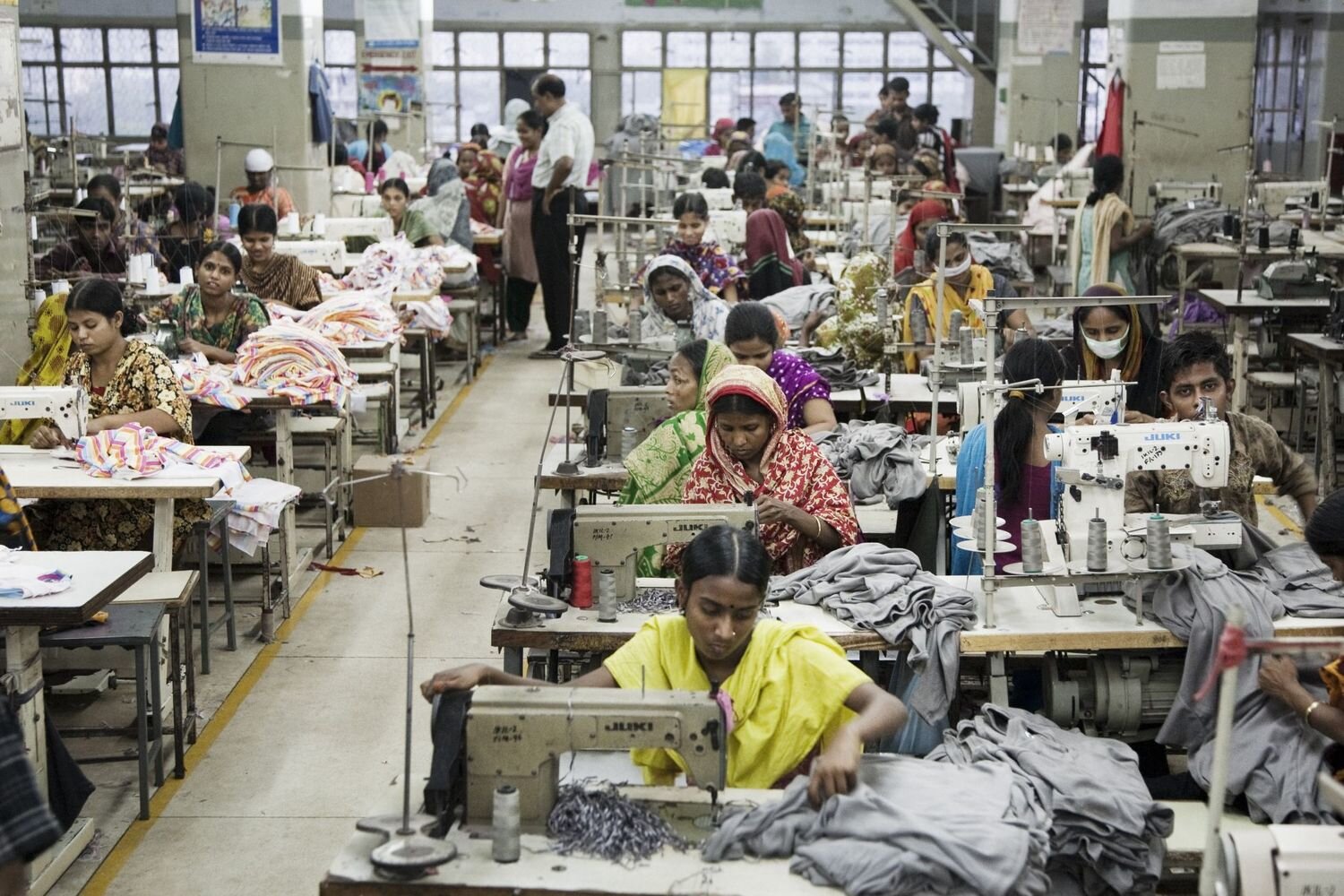Garment workers’ suffering in fashion supply chains
Behind fashion pieces are people. The people who make our clothes, shoes and bags too often aren’t treated with basic dignity, and work forcibly or for next to no pay.
Image: Oxfam’s What She Makes campaign

Whether your clothes are made from leather, cotton, wool, polyester or something else, it’s very possible that the person sewing your garment was exploited.
This is an issue that everyone in the fashion industry needs to consider, address and resolve.
The exploitation of garment workers can happen anywhere, and garments coming from a particular place does not necessarily mean they were produced unethically.
However, China, Bangladesh, and India are hot spots for unethical and exploitative garment, bag and shoe production. This is because most garments in the world are made here [PDF 402KB] as a result of western businesses exporting their production to developing countries, where workers can be easily exploited and paid less.
Many garment workers sew and make clothes in what is considered ‘modern day slavery conditions’. It is critical we all recognise our responsibility in this issue as factories in these countries meet the demands of fashion brands and consumers in the west.
Image: garment workers protest.
Garment workers, who are largely women of colour, often work in unsafe conditions that would never be accepted for white people.
Rana Plaza
In 2013, the most catastrophic garment factory accident in history occurred. The Rana Plaza building in Bangladesh, where many thousands of people worked, collapsed. The building had already been declared unsafe, but workers were made to continue sewing inside despite expressing fear for their lives.
When the building did collapse, 1,134 individual people were killed, and 2,600 more were injured. The clothing produced in the Plaza was sold across the world, including in the west. Many high street brands were supplied by this building, which pressured workers into unsafe conditions due to brands demanding short timeframes for product delivery.
Image: Md Khwaja Miah holds a photo of his 20 year old daughter, Khairunnahar Munni, who worked at Rana Plaza and died in the accident. "She rushed to work after her supervisor called and order her to get to work," he said. Khairunnahar Munni was the only person working in the family, after health complications meant no one else was able to. The family survives by selling their remaining belongings. / Al Jazeera
Unsafe work
There are many dangerous jobs within garment production. For example, some distressed denim is produced through sand-blasting, where people aim high-pressure hoses full of sand at the denim. The sand can cause serious respiratory issues [PDF 640KB].
Workers who iron clothes before they are shipped to Europe, Australia or America have reported doing so in unventilated, windowless rooms that get extremely hot and steam-filled, causing people to faint.
General factory conditions in many ‘sweat shops’ are extremely poor and can be hazardous. It has been reported that workers who demand protective gear, including pregnant women, have been sacked.
It is estimated that only 2% of garment workers around the world are paid a living wage.
A living wage is one that covers a person’s basic needs. This is different from a minimum wage, which may not ensure that someone can affording housing, food, utilities and other essentials for a basic but comfortable and secure life. A living wage should be the minimum accepted wage for any person. Unfortunately, it is not.
Image: Garment workers protest and demand a living wage and a union to protect them
/ Action Aid Australia
Issues of gender-based discrimination and violence are rife in the production of fashion.
Workers have been reported to be denied maternal leave and fired for being pregnant.
Image: Activists protest against forced resignations and firing of pregnant women during the COVID-19 pandemic in Dhaka.
/ Mamunur Rashid / NurPhoto / PA Images
Sexual assault, harassment and violence is a common experience for garment workers. In Cambodia, 1 in 3 women experience this at work. In Bangladesh, that’s 28% of garment workers.
Image: UN Women
Despite women occupying the majority of the garment sector’s total workforce, they are far less likely [PDF 116KB] to have managerial or higher-paying roles.
Image: NurPhoto
Illegal child labour is not uncommon in fashion production
Whether picking cotton, tanning leather, embroidering dresses, sewing pleats in skirts or labels onto t-shirts, child labour [PDF 1.1MB] exists throughout the fashion supply chain in many instances. While some of this labour is forced, all child labour occurs due to poverty and lack of choice.
Child labour impedes on a child’s right to safety, healthy development, education, play and rest.
Image: Bithi, who is 15, sewing clothes for the western world.
/ World Vision / Mark Nonkes

Fashion is only as good as the treatment of those who create it with their own hands. It’s time for a total ethics fashion system.
Want to keep learning?
-

5 reasons fashion is a feminist issue
Despite the feminist slogan t-shirts you can buy in stores, the fashion industry is far from championing the rights of women. In fact, it is an extremely oppressive industry.
-

An industry built on exploitation
Fashion can signify individual expression and has artistic merit, but, it has, since the industrial revolution, relied on exploitation of enslaved people and then wage workers.
-

Tannery workers
Leather tanning almost always requires the use of heavy chemicals. These chemicals harm the humans working with them and their communities.









